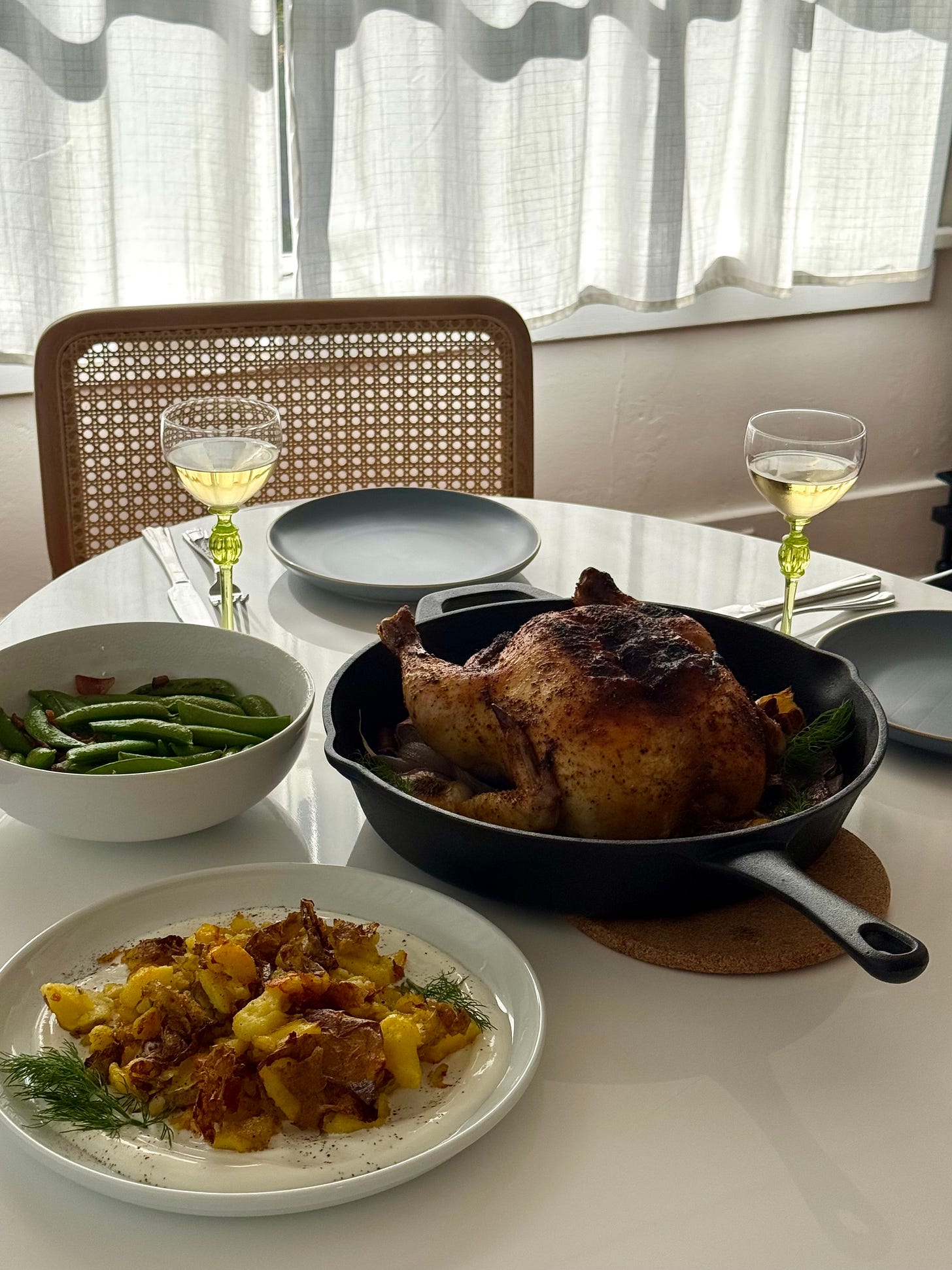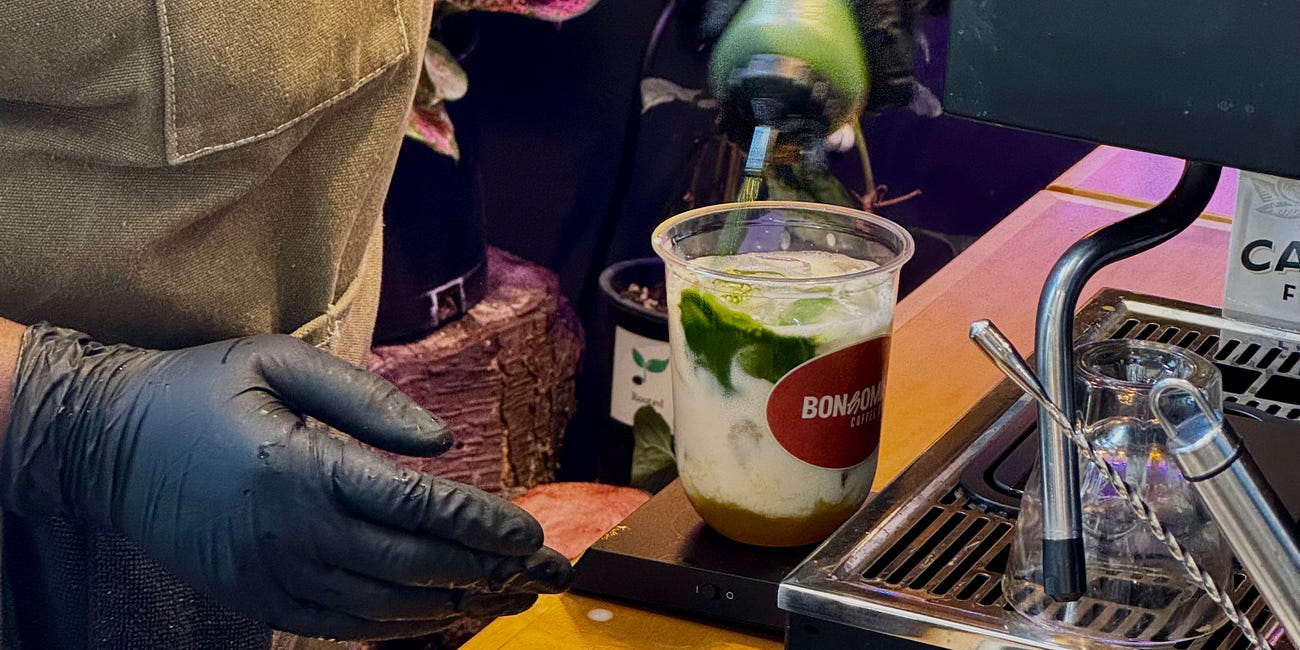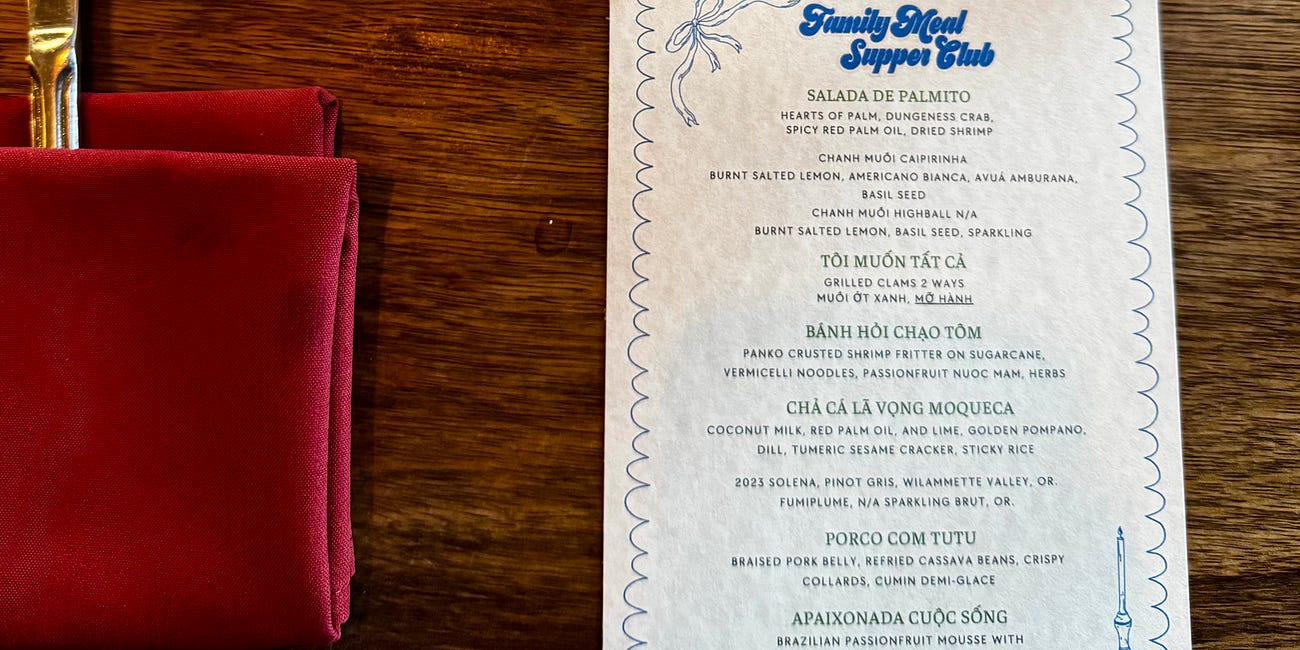What's Simmering: June 2025
Local strawberries, a first attempt at roasting a whole chicken, and bitterness in Bengali cuisine
As we enter July, I’m reflecting on the exceptional month that was June. The weather finally began to warm, I celebrated five birthdays (including my own) with friends and loved ones, and at last my vision filled with local strawberries and cherries. These sweet red morsels remind me how grateful I am to live in a place abundant with such exceptional produce, i.e. exceptional farmers. I say this every season, and I hope I never stop. The mountains (and homemade strawberry shortcake) I cast my eyes on every day remind me to be in awe.
Here are some highlights from the month of June!
Impressions from the restaurants & pop-ups I visited this month in Seattle.
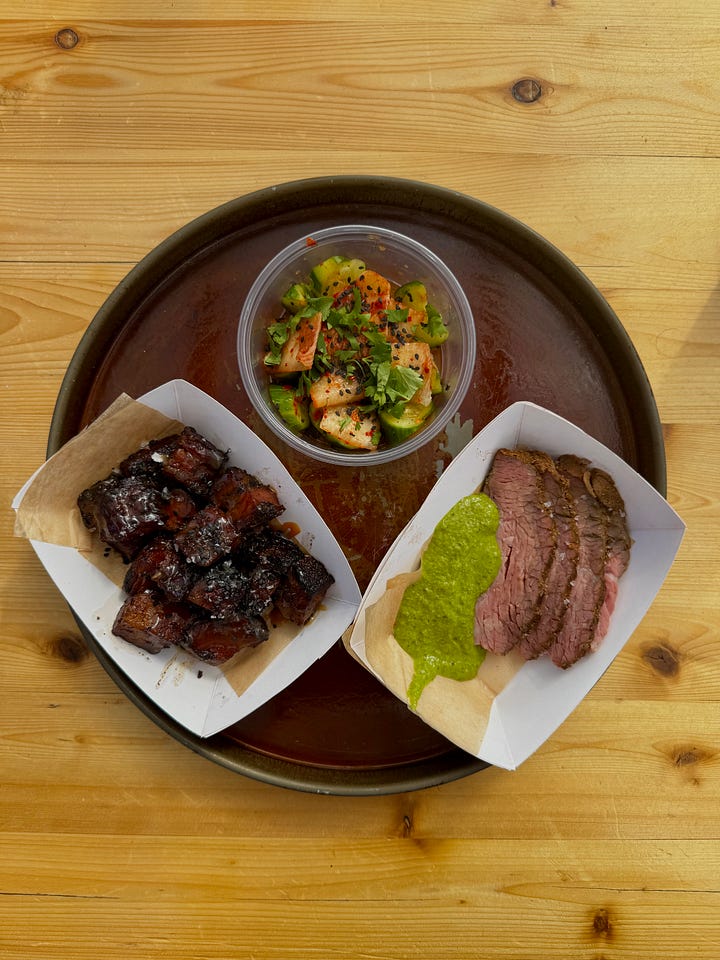
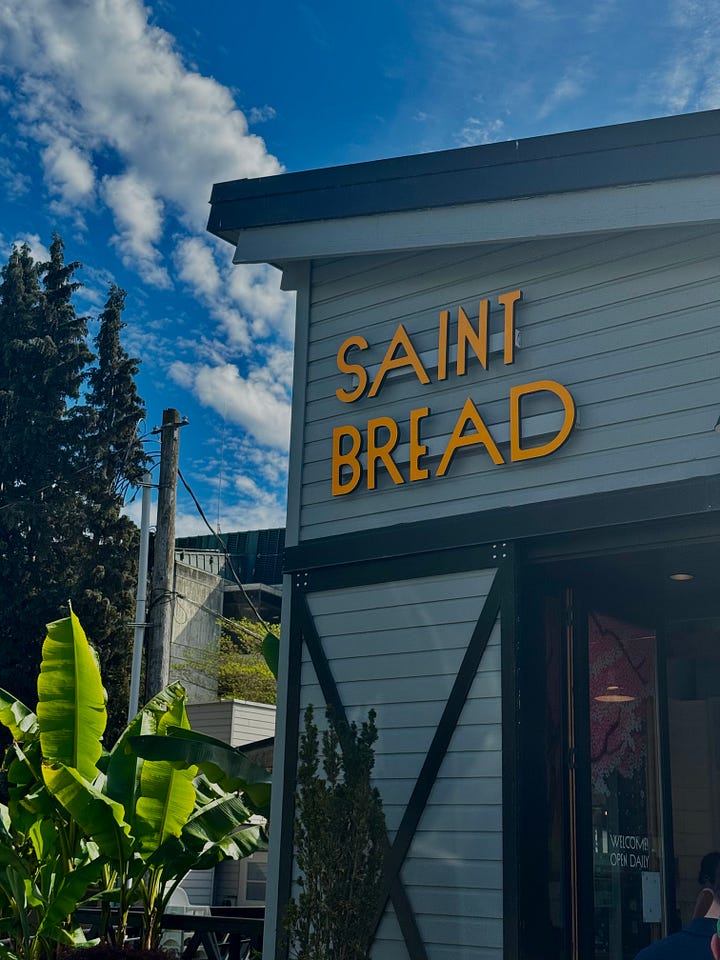
Hinoki & Heave Ho! @ Saint Bread
Four words: Miso. Caramel. Pork. Belly. To be fair, I’ve never disliked a pork belly, particularly when glazed in something that surrenders to both depth and brightness. Hinoki far from ended that streak. Hinoki & Heave Ho! are two seasonal pop-ups at Saint Bread. Hinoki is serving Japanese smoked BBQ alongside Heave Ho! dishing out drinks. In addition to the miso caramel pork belly, we enjoyed a cucumber and kimchi salad, smoked trip-tip with shiso salsa verde, and white rice. It was a meal that was equal parts savory and punchy, making it delightful to graze on while the setting summer sun dipped over Portage Bay. If you find yourself in the U-District, don’t miss them!
Location: U-District
Hours: May-September, Thursday-Friday 4pm-sell out

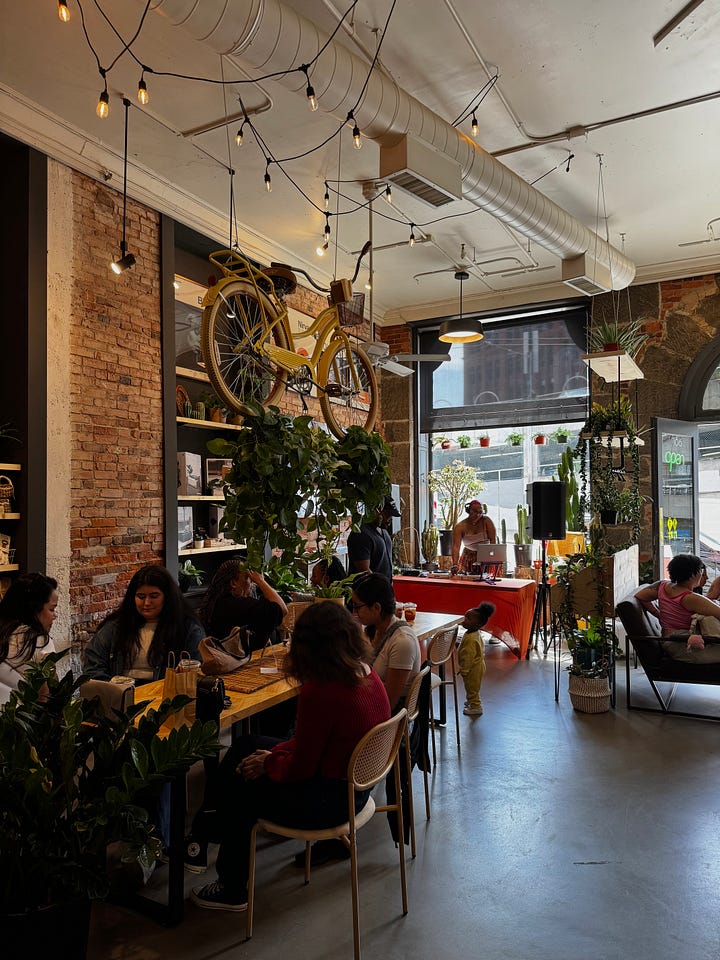
Bonhomie Coffee Bar @ Flora + Fauna
I won’t say too much here because I said quite a lot in my most recent feature, but Michelle and Victoria Dean are the creative couple behind this Haitian-inspired coffee and espresso bar. Haiti was once the world’s largest producer of coffee, though its history with the crop is turbulent. Shaped by the pernicious impacts of colonialism, racism, and poverty, the role coffee plays in Haitian history is one I recommend learning about in order to understand how powerful a venture like this really is.
Location: Pioneer Square
Hours: Thursday-Friday, 8am-1pm & Saturday, 9am-2pm
Brief notes on what’s in my kitchen, on my plate, or on my mind.
Pastrami Roast Chicken from Molly Baz’s Cook This Book
I’ve owned, and subsequently ogled, Molly’s first cookbook for so long, yet up until recently had made only two recipes out of it. Disheartened when my crispy chicken thighs with fennel and mint went absurdly wrong, for the next three years I let dust collect on its bright blue cover. I admit, the chaos of this attempt was my own fault as I failed to read the full instructions before I began. A valuable lesson I’m grateful to have learned, as since it has served me well. With more time and experience in the kitchen, I now feel the confidence to truly, as intended, cook this book. I also turned 27 this month and randomly decided it was high time I learn to roast a whole chicken, which I’ve always felt intimidated to try.
To my surprise, it was actually much easier than it looked. I’m quite stunned to say it was the juiciest chicken I’ve ever had. So, here’s a tender reminder: The thing you’ve built up in your head as being overwhelmingly difficult is likely much more manageable than you think. The huge (in my mind) undertaking of roasting a whole chicken was, in actuality, quite a doable task. I just needed a reframe, which came only after doing the thing. I hope it encourages you to action something—in the kitchen or otherwise—you’ve been hesitant to tackle.
To pair with the chicken, I made Smooshed and Crispy Salt ‘n Vinegar Potatoes (also from the book—could anyone other than Molly pull off a recipe name like that?), charred snap peas with bacon, and a glass of crisp Chardonnay—and voilà, a sublime summer supper.
Bitter Delights from
This short essay with two recipes highlights the bitter flavor profile in Bengali cuisine. It’s fascinating the differences noted in the treatment of bitterness based on the region—softened in West Bengal versus embraced with its “sharp edges” in Bangladesh. I have never tried bitter gourd but am now intrigued to do so, especially with both preparations that Barsha Mallik presents here.
What We Write About When We Write About Food by Ligaya Mishan
“For what is the point of reading about food or, for that matter, reading about anything at all: to look in a mirror, or through a window; to escape the world, or to discover it?” Newly christened as a New York Times co–chief restaurant critic, Ligaya Mishan continues to write vividly, but her past work is also worth revisiting. This piece is simply excellent, a hearty and cohesive reflection of food writing today by examining past treatments and evolutions of the genre. While published in 2022, Ligaya’s assertions feel fresh. For those in food writing or curious about how this space is defined by both the writers within it and culture at large, I highly recommend this read.
Bonhomie Coffee is “Dripping in Culture”
On the same day “No Kings” protesters marched through Seattle and across the U.S., Haitian-inspired coffee pop-up Bonhomie Coffee hosted LAKOU, a celebration of coffee, culture, music, and pride at Flora + Fauna in Pioneer Square.
Family Meal Supper Club
What do eight strangers sitting around a table on a March evening in Seattle have in common? Why, of course, the food we gathered to eat.
Thank you for being here! If you enjoy this content, give it a like, leave a comment, or share with someone you think might also enjoy it. Your support helps sustain my work.







